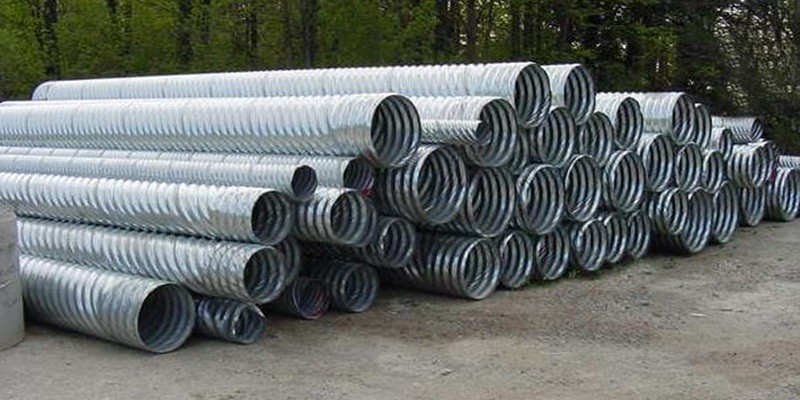How to Determine the Right Size for Your Culvert Pipe
When it comes to managing water flow on your property, selecting the appropriate size for a culvert pipe is a critical decision. This piece of infrastructure is essential for preventing flood damage and ensuring proper drainage. For a comprehensive range of options and expert advice, you might want to visit https://blairsupplyusa.com/. They offer guidance to help you navigate the factors that determine the ideal culvert pipe size for your needs.
The Crucial Role of Culvert Pipes
Culvert pipes facilitate the flow of water from one side of an obstacle to the other, typically under a road or railway. Choosing the right size is vital for the longevity and effectiveness of the culvert.
Understanding Water Flow Dynamics
Before you can select the right size for your culvert pipe, you need to understand the dynamics of the water flow in the area. Factors such as the volume of water, the potential for heavy rainfall, and the slope of the landscape all play significant roles. The size of the culvert pipe will directly affect its ability to manage water flow and prevent flooding, especially during peak flow conditions.
Assessing Your Culvert Pipe Needs
The process of determining the right culvert pipe size should begin with a clear assessment of your property’s specific requirements.
Considering the Area’s Hydrology
Analyzing the hydrology of the area where the culvert will be installed is essential. You’ll need to consider the size and frequency of water flow, the type of soil, and the surrounding environment. An area with heavy rainfall will require a larger culvert pipe to handle the increased water volume. The soil type can affect the absorption of water, and the environmental impact of the culvert must be considered to maintain local ecosystems.
Calculating Water Flow Rates
Calculating the water flow rate that the culvert must accommodate is a complex but necessary step in choosing the right size.
The Science of Water Flow Measurement
To calculate the flow rate, you will need to gather data on the watershed area that contributes to the flow, the average rainfall, and the runoff characteristics of the watershed. This information can be used to estimate the peak flow rate using hydrologic calculation methods, which will inform the minimum size the culvert must be to handle the water effectively.
The Impact of Roadway Design
The design of the roadway or path where the culvert pipe will be installed also influences the size of the pipe required.
Aligning Culvert Size with Roadway Parameters
The width and weight load of the road, as well as the type of vehicles it will support, impact the culvert’s size and strength. A broader or more heavily trafficked road will generally require a larger and more robust culvert pipe. Additionally, the cover height—the depth of material above the pipe—must be sufficient to support the roadway without risk of collapse.
Regulations and Environmental Considerations
Local regulations and environmental considerations must be taken into account when selecting a culvert pipe. These factors can dictate specific requirements or limitations on culvert size and materials.
Navigating Legal and Environmental Guidelines
Check with local building codes and environmental protection regulations before making your selection. There may be requirements to protect local wildlife, such as fish passages, or restrictions based on the watershed’s size and significance. Compliance with these regulations not only ensures legal adherence but also promotes environmental stewardship.
Material Matters: The Role of Durability and Cost
The material of the culvert pipe affects its size and performance. Different materials have varying strengths, lifespans, and costs.
Balancing Material Benefits with Budget
Common culvert materials include galvanized steel, polyethylene, and concrete. Steel is strong and flexible, polyethylene is lightweight and resistant to corrosion, and concrete is durable and robust. The material choice will affect the size because each material handles load and flow rates differently. Cost is also a factor, as materials like galvanized steel may be more expensive than polyethylene but offer longer service life.
Professional Insight: Consulting with Experts
For most, selecting the right culvert pipe size is not a DIY job. Professional advice can prevent costly mistakes.
Leveraging Expertise for Optimal Results
Hydraulic engineers or land surveyors have the expertise to accurately determine the appropriate culvert size. They can conduct the necessary studies and calculations to ensure that your culvert pipe meets all requirements for flow rate, road design, regulations, and material specifications. Consulting with professionals can provide peace of mind and ensure that your culvert is suited for its intended purpose.
Putting It All Together: Choosing the Correct Culvert Pipe Size
After considering all the factors, choosing the correct culvert pipe size is a matter of integrating the data into a well-informed decision.
The Culmination of Considerations
Gathering all the information—from hydrology studies, flow rate calculations, roadway design, regulations, material properties, and professional advice—will lead you to a decision that balances functionality, compliance, and cost. Remember, an adequately sized culvert pipe not only addresses immediate water flow needs but also provides a long-term solution to water management challenges. Selecting the right size for a culvert pipe is a multifaceted process that requires careful consideration of various factors. By understanding the specifics of water flow, the design of the roadway, and the importance of adhering to regulations, you can make an informed choice that ensures effective water management. Remember that consulting with professionals can offer additional assurance that the size you select will serve your property well into the future. Properly sized, your culvert pipe will be a crucial component in preserving the integrity of both the built and natural environments it serves.

